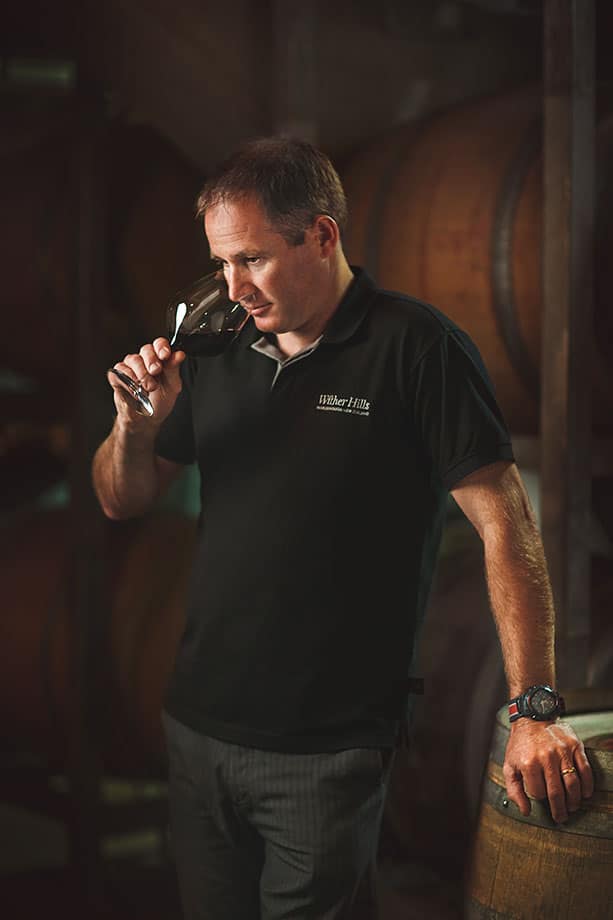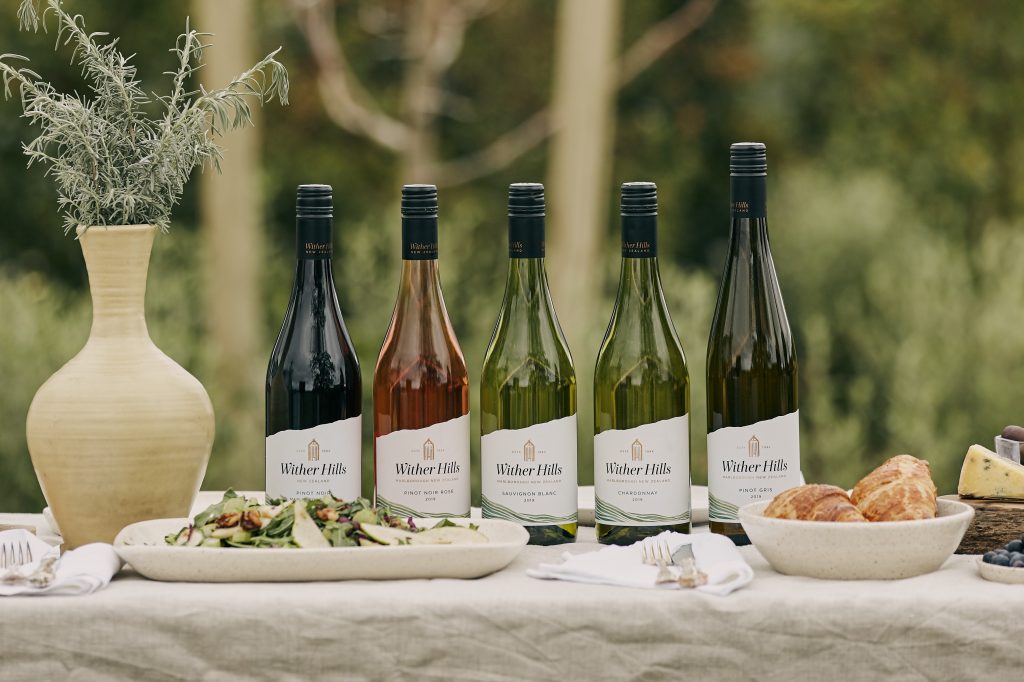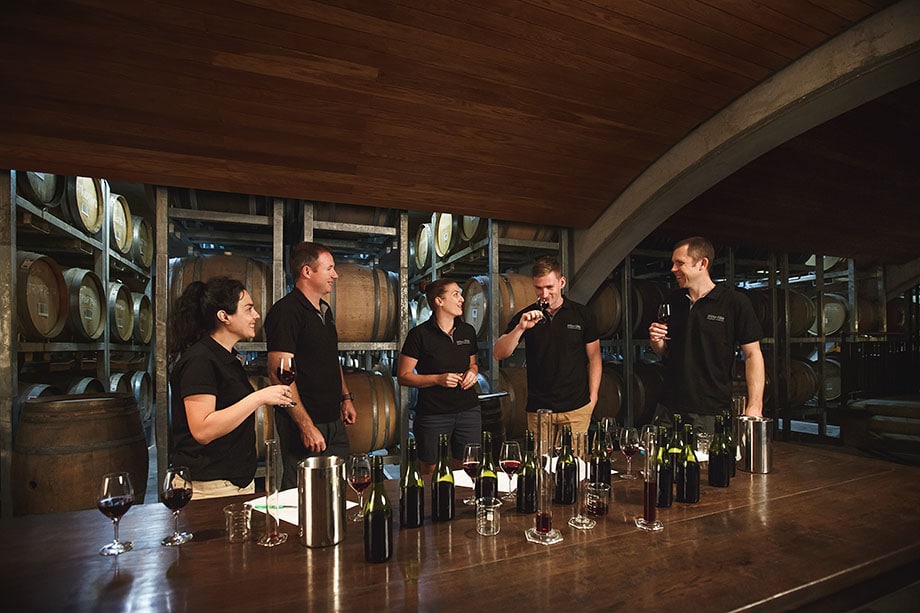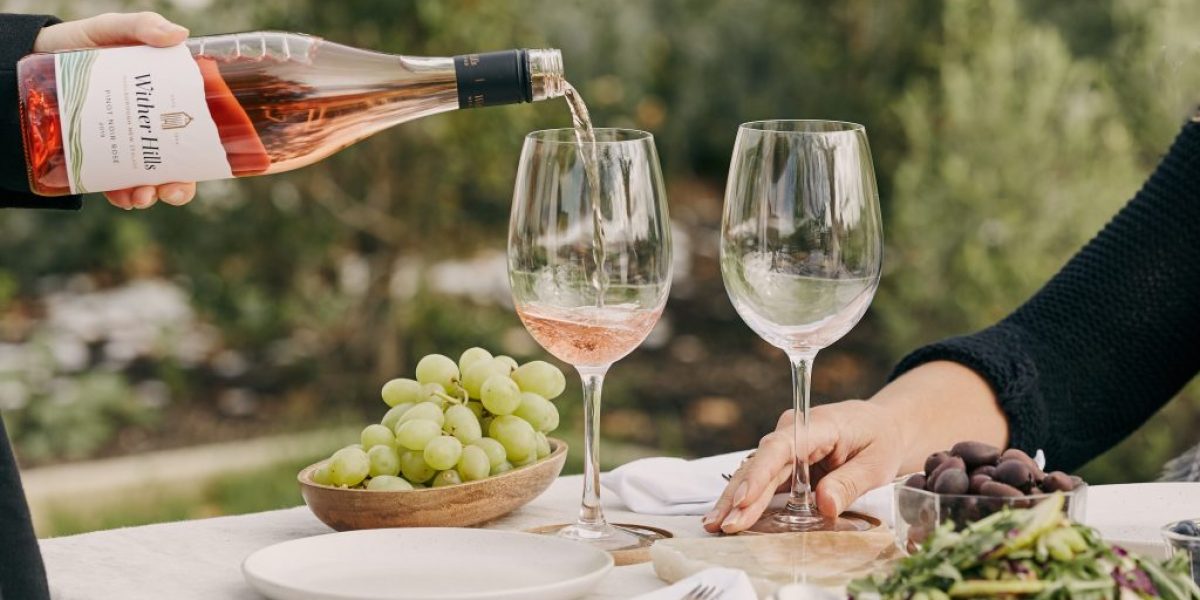How To Make A Great Brand
Wither Hills is a well respected wine brand here and around the globe, but behind the beautiful branding and labelling is a blend of hard work, weather and land variables, years of knowledge, science, craft and passion. Head winemaker, Matt Large takes us through the journey.
Is there a place or a time that you feel most at home in the winemaking process?
For me, it’s harvest. It’s the start of when you really get a chance to take that fruit and look at what you’ve got and how you can mold it into something that hopefully others enjoy. We are a team of about 20 on the winery and when it comes to harvest, we employ an extra 40 people to help crush the fruit, make the wine, et cetera, and so you’ve got that real vibrancy and excitement.

When you’re at the harvest time, are you able to tell what kind of vintage you’re going to have?
We are actually able to get a bit of an idea earlier on in the season in the growing. The life-cycle of making a wine starts originally from where you plant the grapes. Things like which part of a region you plant the grapes and what type of soil, what sort of environment it has, will all have an impact on the type of fruit that you grow. And then in turn, how that turns into wine. And so once you’ve planted, every year in the winter time, we prune all the canes off and we wait for the new growth to go. So depending on what the season’s doing, that gives us our first insight.
If we get a wet season or a dry season, a warm season or a cold season, they can have a very big influence on what the wine style or the quality is going to be. As we watch the fruit grow through the season, we’re keeping an eye on the weather. Then, when it comes to harvest time, that’s probably, in my opinion, the biggest decision that myself and the team make as far as wine making. The moment in time when you effectively take that fruit off the vine, for me, is when you’re capturing all that flavour and all of that quality that’s there. From there, as a winemaker in a roundabout way, you just try not to stuff it up, just like if you’re trying to preserve the flavours that are there.
There are other variables like the fermentation of the wine, the introduction of the yeast that changes some of those flavours and some of the compounds that work quite chemically in there. And then through to the use of an oak barrel for Chardonnay and Pinot, so we’re adding a little bit of the oak flavour in there. The maturation, the micro oxidation, and all those things are making it change, but quality-wise, you see it from the start and all the way through. It is a very interesting process and I think the new vintage each year gives you that passion to start from fresh.
Can you tell the work of a particular head winemaker?
There are a lot of great winemakers and a lot of great wine making companies and certain companies have a bit of a style. I think it’s a little bit harder to pick out a particular person. We’ve got a style that we’re looking for and we’re trying to keep that as consistent as possible, given the vintage variation. We see it as our job to take what we’re given and turn that into something that we think is in the Wither Hills style.

How do you describe that style?
For me, it’s about consistency first and foremost. It’s about trying to get that consistent style. Quality is a big part of that. If I take Wither Hills Sauvignon Blanc for example, it’s nice and aromatic on the nose, a wide range of flavours from those greener grassy herbaceous notes, all the way through to the tropical and stone fruits. On the palette, it’s about big rich weight and texture. We do a lot of work in the winery to get a good palate weight and length of palate. When you put some wine in your mouth and you swallow it, we want you to be five, 10, 15, 20 seconds later, still describing things that are happening.
So I think the Wither Hills style is about that palate length and palate weight and also being very traditional to Marlborough. The Marlborough brand has done us and lots of other companies very well and I think that’s what people are expecting out of a wine. That’s also not to say that we’re not trying other things. We’ve got a cellar collection range that we produce, which is where we’re trialling slightly off the side things.
Speaking of Marlborough, that landscape is such a big part of the brand as well. And then the very different vineyards that you can choose from within the region. How much does that set the blueprint for things?
Hugely. Like you say, we source fruit from different parts of the Valley. A lot of the vineyards that we concentrate on are in the Wairau Valley part, which is the main part where the town of Blenheim is, but Marlborough is split into two main valleys.
You’ve got the Wairau Valley and then just over the hill is Awatere Valley, which is where the Seddon township is. Ours predominantly comes from the Wairau Valley part and within that Valley, we’ve probably identified six or seven different little sub regions within there. One of our big vineyards is out near the coast at our Rarangi vineyard and that tends to give us a really nice line to the wine, which is a nice acid structure, some nice citrus notes, minerality, sort of a whetstone sea salt character.
And then if we take our Taylor River vineyard, which is up behind the winery in the Southern Valley area, that tends to give us a bit more palate weight and, in the riper spectrums, a bit more tropical, a bit more fullness. When we put blocks of fruit together or parcels of wine together from those two different vineyards, we tend to start to get what’s called blending, which means we start to get more flavour through. Rather than just something that’s green and herbaceous, if you add in a wine that’s got some tropical characters to it, then you start to get that herbaceous and the tropical together. That’s all very much a derivative of where the vineyard site is, as well as the other big driving decision around picking. If you pick early, you tend to have more malic content which has a bit more of that greener character. Whereas if you pick a little bit later, you get a riper taste.
Have you noticed that there has been a certain shift in consumer tastes over your career?
I think that people are now looking more into the technical side of the wine, they’re looking for more than just the big approach, upfront rich flavours. They’re moving for more layers of flavours, they’re looking for some nice lingering characters. We do that through the blending process. As we have vineyards in various parts of the Marlborough region, when it comes to blending time for Sauvignon Blanc, for example, we can sometimes have 80 to 100 different different parcels of wine that make up that blend. It’s about trying to build those layers. I think that people have more of an understanding and they want to see more of that happening in the glass, as opposed to one or two or flavours. That’s probably a case of people getting more educated about wine and people knowing what they like.

When you’re talking about the process of blending and the variables you get a real sense of craft and art and science.
Very much and I think winemaking is a split between science and craft or the artisan side of it. It’s about how you use both of those to get what you’re after. We certainly use numbers a lot in the chemistry side of it. We were testing for all sorts of things. For me, they give us an indication on where we’re hitting, but everything we do from picking decisions through to blending through to bottling, all those are based on taste and smell.
A lot of the time, marketing can be a little bit glib, but you can see the thinking in the Wither Hills ‘Made Beautifully’ ethos.
Yeah, I think it was interesting because the tagline was a collaboration between us and the marketing people coming to the winery. They came down here and they spent some time with us and looked around and helped us out in the winemaking process. So I think it just felt so natural to them that actually, this isn’t wine making by numbers. There’s a lot of passionate people here. It’s an amazing place. This makes amazing wines and so it was about how you capture those sorts of things in a tagline.
I personally really feel that ‘Made Beautifully’ is not just about the fact that the wine itself and the bottle is beautiful or it’s the way it was particularly made. I think it’s the passion of the people. It’s the guy that gets up at two o’clock in the morning to fight the frost, to make sure that we actually have product at the end of the day. It’s the winemaker that makes the decision based on what their gut-feel tells them. And the marketing person that takes the vision of what the winemaker and the viticultural team have, and turns it into a campaign that is able to showcase not just the beauty of the place, but also the people.
Experience Wither Hills Made Beautifully for yourself.

